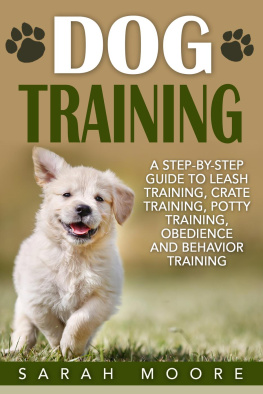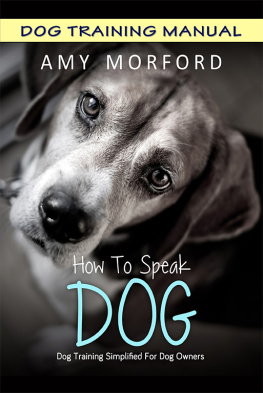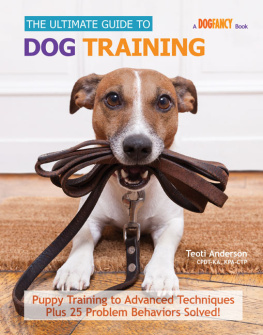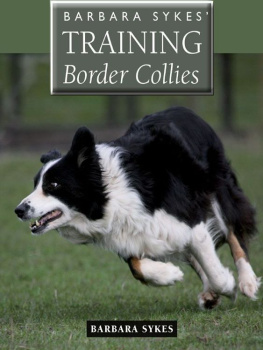CHAPTER 3
An Introduction to a Professional Hunting-Dog Trainer
IN MARCH OF 2000, HAVING NEGOTIATED A NEW POSITION FOR MYSELF with the magazines I worked for, I bought (through a large pay cut) more time away from the office. This, I hoped, would allow me to finish a novel I was writing and to begin to train Reilly with proper attention. But away from work, I became confounded to the point of being mildly immobilized about dog training. I had covered what the monks taught in print; I had read and studied and reread what I considered to be a helpful pointer-training book by Kenneth Roebuck but had stalled with that guide after hitting the chapter called Faults. Would I ruin Reillys tolerance if I shot a gun near her? Would I destroy her staunchness by letting her munch one of my mooched pheasant wings? And how the hell could I ever quell the affliction of pointing dogs called blinking, otherwise known as a demonstrative lack of interest in pointing game?
I talked to Brendan Banahan, and he suggested I call a trainer just getting established with his kennels across the border from Vermont near the village of Cambridge, New York. This trainer, Brendan told me, was an acolyte of one of the great pointing-dog trainers (specializing in weimaraners) of the 1970s and 80s. The Cambridge area, including Manchester, Vermont, and around the Batten Kill corridor of Route 313, was the home of many active sportsmen during the mid to late twentieth century. Less than four hours from New York City, yet knocking on the door of the Adirondacks and the Green Mountains, and home to great trout fishing on the Batten Kill and upland bird covers holding woodcock and grouse, the area attracted a gathering of sportsmen of the time, such as Burton Spiller and Corey Ford and even, for a time, fly-fishing great Lee Wulff. That the Orvis Company had headquarters in Manchester helped attract this sporting tropism to the area through the decades, and still does to this day. The bird hunting there is challenging today, however, as coverts have been cleared to make way for development, and the fishing in the Batten Kill is difficult. As I write this in late 2003, close to a million federal dollars have been apportioned and poured into Batten Kill research, the goal of which is to determine the cause of the decline in the river of brown trouta foreign species to begin with, as German brown trout have been stocked from foreign sources and are nonnative throughout this country.
Brendan had bought a country house in Cambridge when he lived in New York City in the late 1980s and had quickly assimilated into the sporting culture, largely through the encouragement of his uncle Dick, who had retired to that part of New York. Dave Slohm, who had managed the gun department at Orvis for years, was another influence in his bird-hunting education. Brendans pointer, Nell, led to his acquaintance with Chet Cummings, who agreed to evaluate Nell when she was a puppy and eventually to train her.
I wish I had met and known Chet; the closest I came to that was waving to him and his wife, Ginger, from the front seat of Brendans Explorer as he kenneled Nell at Chets farm before we tore off for a weekend of fly fishing on the beaches of Cape Cod in the late 1990s. Chet was one of the countrys top dog trainers in the later twentieth century, scoring his greatest acclaim with his dog Fritz von Weimar, a weimaraner national champion field-trial hot rod. Chet himself had moved to the New YorkVermont border area from Litchfield, Connecticut.
I first met Chet in 1982, and we brought two dogs back in then. They were setters. Chester trained weimaraners. I asked him why, and he said, basically, Those are the only people who have money, Jeff Gaess told me. Jeff had dogs trained by Chet and eventually bought Chets farm in Greenwich, New York. We had a lotta great years until his passing. He was very particular with what he did. That was his whole life. He told me that he was hunting with his father and his uncle when he was ten years old, and I think one of his uncles friends had a dog. And that dog went on point. They flushed the bird and shot it, and Chet said from that point on is when he decided he wanted to be a dog handler.
The trainer Brendan suggested for Reilly had taken over Chets kennels after he died, while Jeff Gaess was figuring out the closing on the farm with Chets family. The trainer, who had worked with Chet for years, was John Offerman, a German shorthair owner who shared my passion for pointing dogs and who came to love my dog as I do.
John and I did not become fast friends during our first meeting one day in June. At first we had a business relationship. He began by asking me what results I wanted from my dog, and I said, To draw the best of her instincts out. After a brief lawn assessment of Reillys degree of performance at the nine-month stage, he told me directly that to get the results I wanted, it would be best to kennel Reilly with him full-time. I didnt blink. I had asked my friend Larry Kenney, an Oregonian whose springer spaniels were professionally trained, Do they still know you when they get back from a summer in a kennel? He gave me the most persuasive advice I had received at that point in my early life as a pointing-dog owner: Well, after a couple months at the trainers, Feather [one of Larrys springers] ran into the house, jumped on the couch, and looked at me like, Whats up, Dad?
So I wouldnt kill my relationship with my young dog by leaving her with a trainer.
Larry continued on a positive note: My springers live for human attention as much as they do for birds. One of the underacknowledged advantages of placing a dog with a pro trainer is that the dog gets a maximum amount of human attention during training and not much attention at other times. Gone too are the confusing signals that come from a devoted owner and his family. My male pup knew from experience that I wasnt all business; fifteen minutes with the trainer and he knew he wasnt going to get away with anything. At the trainers, nothing else during the day was a tenth so interesting as when the guy with the hat opened the kennel door and took him to the training field. A dog in this situation is eager and focused and, I suspect, learns better.
I asked John whether he would mind if I joined in the training, to get a rudimentary knowledge of what he would be doing with the dog. He told me it would be no problem, and we agreed to a summer-long price of about $900 for training and boarding.
So on the Fourth of July weekend of 2000, on the way to central New York to spend the weekend at the lake on which my parents lived, C and I dropped off Reilly at Johns comfy heated kennels, with cedar chips in each dog box. We told the ten-month-young puppy that she was in good hands. C cried. I almost did. But fifteen minutes later, we were free from the rigors of owning a young dog. And I couldnt wait to get back to the kennel to watch John train her.
CHAPTER 6
Reilly and Me on the Road
ON ROUTE 67 ONE MORNIG THAT SUMMER, JUST I WAS DAY-dreaming about ordering my usual twoeggsandbaconandhomefries breakfast at Bensons Diner outside of White Creek, New York, after a morning working at the farm with John and Reilly and watching the dog tremble and shake but hold tight as a planted quail hunkered low in the thick grass a foot from her nosethe dog agitated but not breaking point, an action that spelled the beginnings of her pointing instincts being drawn out through the field trainingI saw an image straight out of my dreams. Up on a knoll on the north side of the road, parked on the lawn that tumbled down from a tidy yellow farmhouse, sunlight glinting off its white aluminum siding, was a vintage greenstriped vision sitting on two wheels, with its tongue leveled on a split piece of log: It was the singleaxle travel trailer I had always wanted.
Next page











